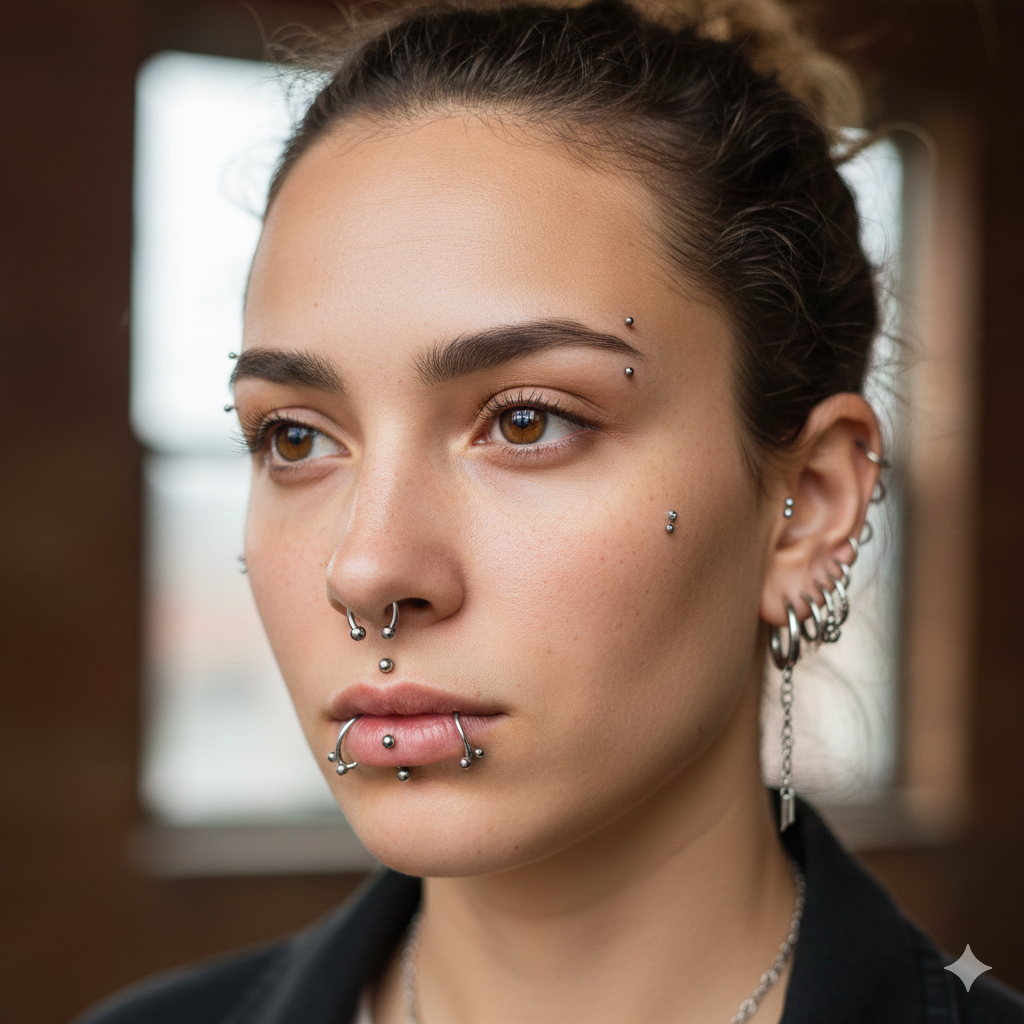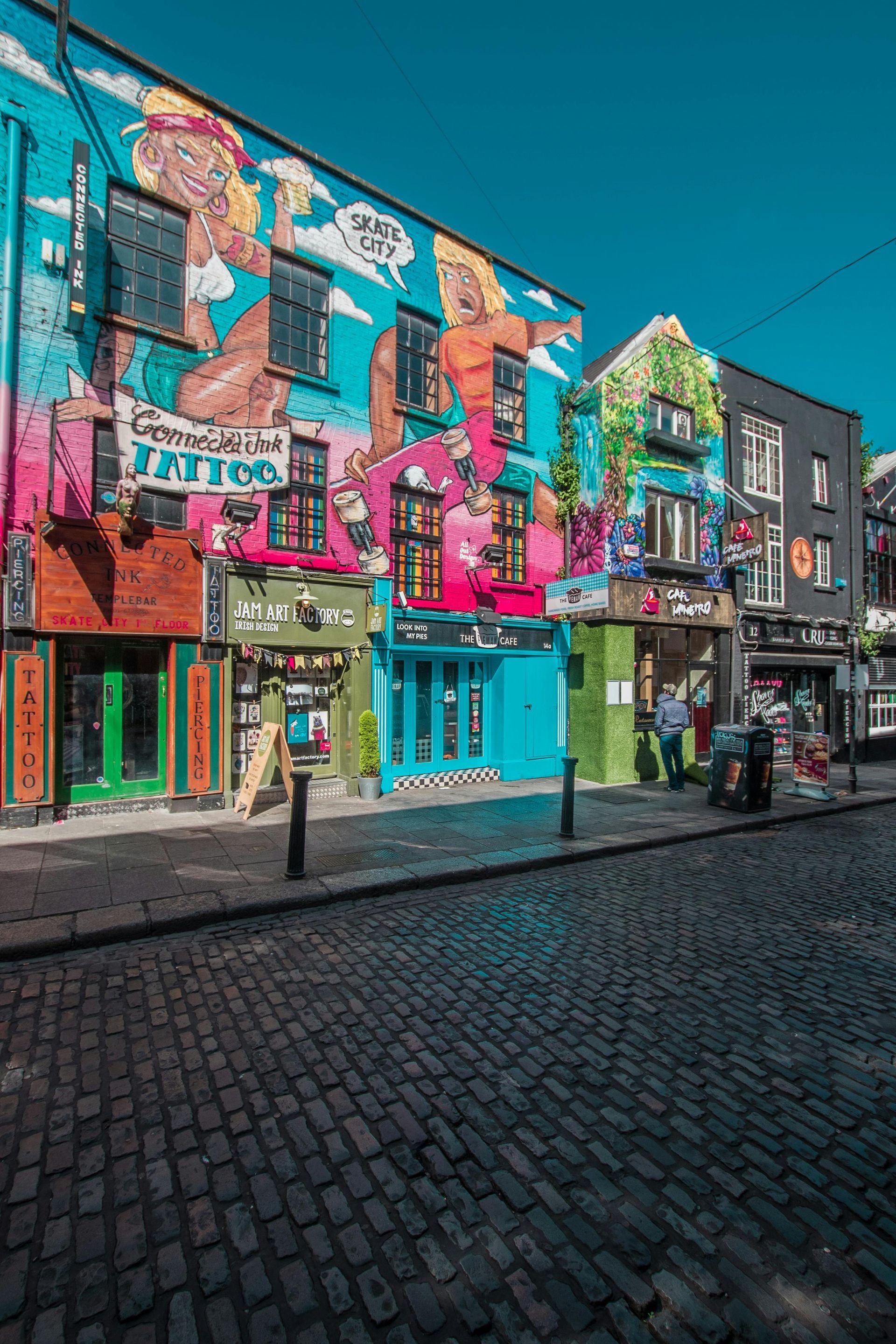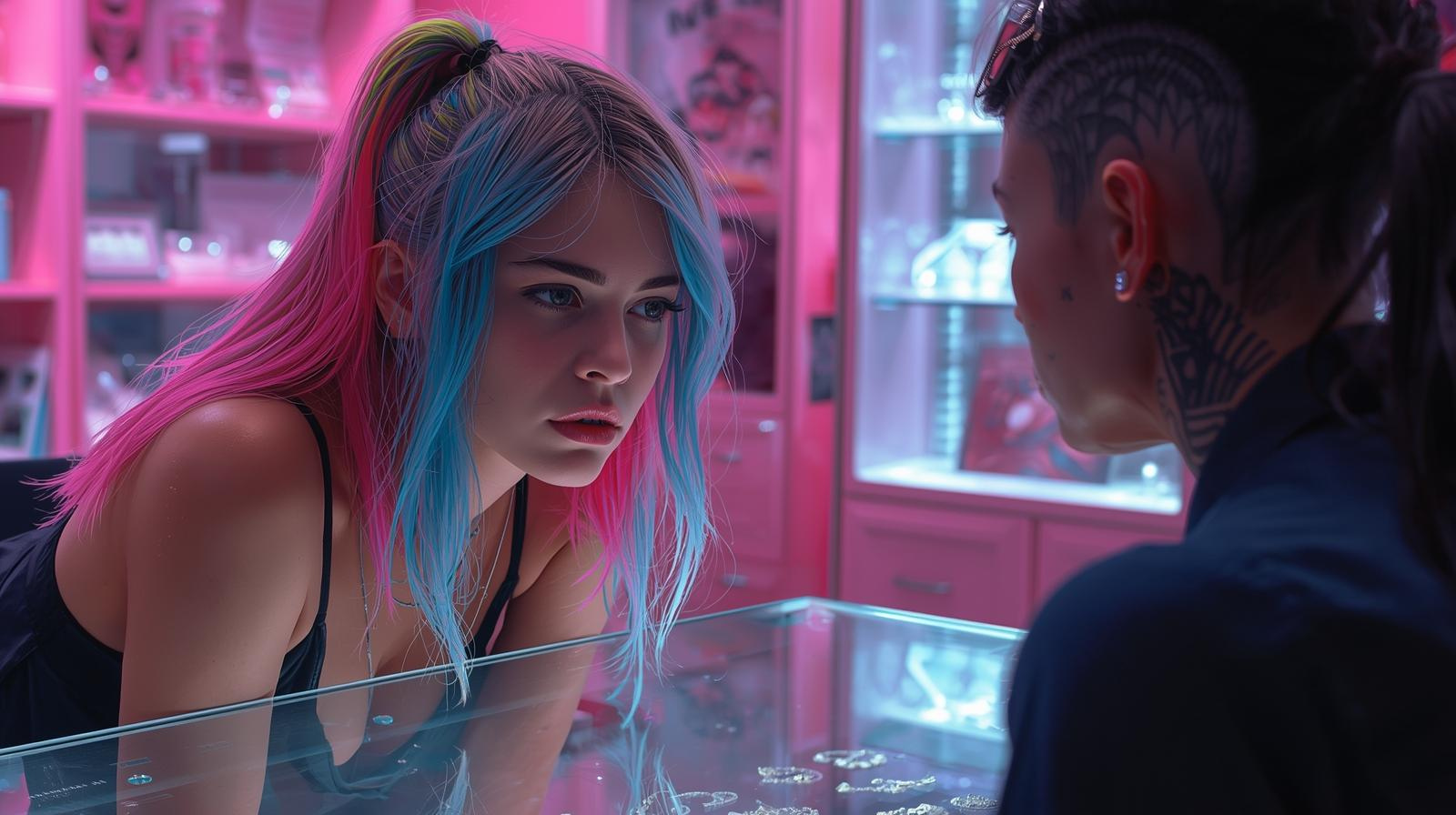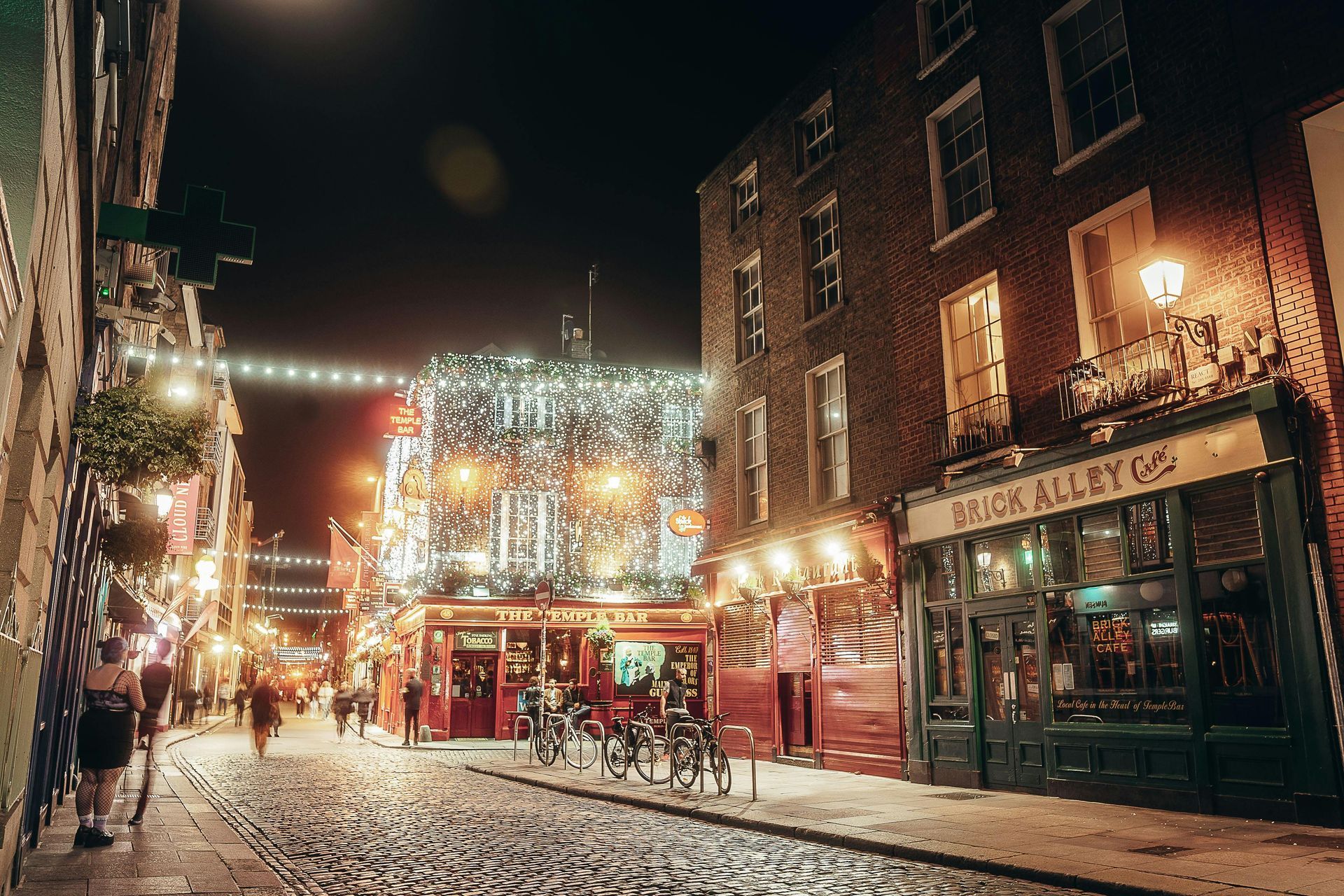Can I Get a Piercing? A Comprehensive Guide
Table of Contents
- Introduction
- Understanding Piercing: What You Need to Know
- Factors to Consider Before Getting a Piercing
- Health Considerations
- Anatomy and Piercing
- Pain Tolerance
- Choosing the Right Piercing Studio
- Importance of Hygiene and Safety
- Researching Studios
- Types of Piercings Available
- Piercing Process: What to Expect
- Aftercare Tips for a Successful Healing
- Common Piercing Risks and How to Avoid Them
- Frequently Asked Questions (FAQ)
- Conclusion
Introduction
Getting a piercing is a personal choice that offers both excitement and a degree of apprehension. Whether you are contemplating a classic earlobe piercing or a unique option like an implant, being well-informed is crucial. This guide is designed to equip you with comprehensive information to make an educated decision about getting a piercing. From understanding your anatomy to selecting the right studio, we cover all essential aspects. Piercings can transcend mere adornments, serving as cultural, personal, or aesthetic statements. By gaining insight into the process, you can ensure your body modification journey is both safe and gratifying.
Understanding Piercing: What You Need to Know
Piercing involves creating an opening in a part of the body to insert jewellery. It is an ancient practice embraced by various cultures for personal expression, religious reasons, or aesthetic appeal. Modern piercing techniques emphasize precision, safety, and hygiene to ensure a successful and satisfying experience. Across history, piercings have signified status, indicated rites of passage, or served as protection. For instance, in some African tribes, lip and ear piercings are part of ceremonial traditions. Today, the practice is mainstream, with innovations such as dermal implants and surface piercings expanding the realm of possibilities. Understanding the evolution and cultural significance of piercings can enrich your experience.
In the contemporary context, piercings have been further popularised through the influence of celebrities and social media, which often showcase intricate piercing arrangements as fashion statements. The influence of these platforms has led to a surge in demand for body jewellery that reflects personal style and identity. The industry has responded with a diverse array of jewellery options, including minimalist pieces for subtle elegance and bold designs for more expressive wearers.
Factors to Consider Before Getting a Piercing
Health Considerations
Before deciding to get a piercing, evaluate your health status. Individuals with certain health conditions, such as diabetes, autoimmune diseases, or bleeding disorders, should consult with a healthcare professional before proceeding. It is crucial to ensure that your immune system is in good shape to facilitate healing and reduce the risk of complications. For example, a case in London involved a client with diabetes who developed a severe infection post-piercing, underscoring the need for prior medical consultation. Additionally, individuals with allergies should be cautious about the materials used in jewellery, opting for hypoallergenic options like titanium or surgical steel.
Furthermore, it is important to consider any current medications that might impact the healing process. For instance, those on anticoagulants or immunosuppressive drugs should seek medical advice to understand the potential implications. Some practitioners recommend pausing certain medications before piercing, but this should only be done under medical supervision.
Anatomy and Piercing
Anatomy plays a significant role in the piercing process. Each individual’s anatomy is unique, affecting both the feasibility and placement of certain piercings. Professional piercers assess your anatomy to determine the best placement for the piercing. In Dublin and beyond, some piercers refuse certain piercings, claiming the client's anatomy is unsuitable. However, skilled piercers, such as those at Impulse BioWorks, can often accommodate unique anatomical variations. Sean Dubss at Impulse Bioworks & Piercings is known for taking on challenging anatomies and has been able to pierce many clients refused at other popular piercing studios. This expertise ensures that even those with atypical ear, nose, or navel shapes can safely receive their desired piercings.
Anatomy considerations extend beyond the initial piercing. The healing process is also influenced by factors such as skin thickness and elasticity, which can vary significantly between individuals. Consulting with an experienced piercer can provide insights into how these factors might affect both the healing timeline and the long-term outcome of your piercing.
Pain Tolerance
Consider your pain tolerance before deciding on a piercing. While some piercings are relatively painless, others can be more uncomfortable. Discussing your concerns with your piercer can help you prepare mentally and physically for the procedure. An individual in Manchester shared their experience of getting a septum piercing, noting that while the initial piercing was quick, the discomfort during healing was more than anticipated. Understanding your body's response to pain and discussing pain management options with your piercer can enhance your comfort during the process.
Pain management strategies may include topical anaesthetics or breathing techniques to minimise discomfort. Some studios offer numbing solutions, but these should be used judiciously and only with professional advice. Additionally, understanding the pain scale associated with different types of piercings can help you make an informed decision. For instance, earlobe piercings are generally rated lower on the pain scale compared to cartilage piercings, which might be more intense.
Choosing the Right Piercing Studio
Importance of Hygiene and Safety
Hygiene and safety should be your top priorities when selecting a piercing studio. Ensure the studio follows strict sterilisation protocols. All equipment should be single-use or properly sterilised, and the piercer should wear gloves throughout the procedure. Impulse BioWorks, located in Dublin’s Temple Bar, is known for its rigorous hygiene standards and professional approach. Their commitment to cleanliness is evident in their use of autoclaves for sterilising tools, ensuring that every client is treated in an environment that minimises the risk of infection. Checking whether a studio is a member of professional organisations such as the Association of Professional Piercers can also provide peace of mind.
Studios that maintain high hygiene standards often display their sterilisation certification and are willing to walk clients through their procedures. The presence of visible hygiene protocols, such as clearly marked disposal units for single-use items and well-maintained workspaces, can further assure clients of the studio's commitment to safety.
Researching Studios
Take the time to research potential studios. Look for reviews and testimonials from previous clients. Visit the studio in person if possible to assess cleanliness and professionalism. Don't hesitate to ask the piercer about their experience, qualifications, and the procedures they follow. For instance, a customer in Brighton praised a studio for its transparency, where the piercer willingly showed their certification and explained the sterilisation process thoroughly. Such openness not only builds trust but also ensures that you are well-informed about the environment where you will be pierced.
In addition to verifying the studio's credentials, consider the piercer's body of work. Many professional piercers maintain portfolios showcasing their previous work, which can be a valuable resource for gauging their expertise and style. Engaging with online communities and forums dedicated to body modification can also provide insights into reputable studios and piercers, as well as first-hand accounts of client experiences.
Types of Piercings Available
There are numerous types of piercings available, each with its own appeal and considerations. Common piercings include:
- Earlobe Piercings: The most common type, typically heals quickly and easily. They are often the first piercings individuals choose due to their simplicity and low pain level. The versatility of earlobe piercings allows for a wide range of jewellery styles, from classic studs to more elaborate designs.
- Cartilage Piercings: Includes helix, tragus, and conch piercings. These can take longer to heal and may require additional aftercare. An example is a helix piercing, which can take up to a year to fully heal, as experienced by clients opting for intricate ear designs. Due to the nature of cartilage, these piercings are more prone to discomfort during healing, necessitating careful attention to aftercare.
- Nose Piercings: Includes nostril and septum piercings. They require proper aftercare to prevent irritation from daily activities like face washing. Nose piercings have cultural significance in many societies and are often chosen for their aesthetic versatility.
- Oral Piercings: Includes tongue and lip piercings. They need diligent hygiene practices due to their proximity to bacteria-rich environments. Oral piercings can impact activities such as eating and speaking, and thus require careful selection of appropriate jewellery to minimise discomfort and risk.
- Body Piercings: Includes navel and nipple piercings. Healing times can vary significantly, often influenced by clothing and movement. Body piercings can accentuate personal features and are popular for their unique appeal.
- Surface Piercings and Implants: These require specialised techniques and expertise. They can offer unique aesthetic results but come with a higher risk of migration or rejection. Surface piercings are often chosen for their striking appearance and are popular among individuals seeking non-traditional body art.
Piercing Process: What to Expect
Understanding the piercing process can alleviate anxiety. Here’s a step-by-step overview:
- Consultation: Discuss your desired piercing with the piercer, who will assess your anatomy and address any concerns. This initial step is crucial for establishing a clear understanding of the process and managing expectations. A thorough consultation also ensures that both parties agree on the desired outcome, reducing the likelihood of miscommunication.
- Preparation: The piercer will clean and mark the area to ensure accurate placement. This meticulous step is designed to align with your anatomy for optimal healing and aesthetic appeal. Marking the area allows for adjustments if necessary, ensuring that the final placement meets your expectations.
- Piercing: Using a sterilised needle, the piercer will create the opening and insert the jewellery. The use of needles, rather than piercing guns, is emphasised for its precision and reduced trauma to surrounding tissue. The piercing process itself is typically quick, often lasting only a few seconds, but the focus on precision ensures minimal discomfort.
- Aftercare Instructions: You’ll receive detailed aftercare instructions to promote healing and prevent infection. This may include written guidelines and recommended products to ensure you have all necessary resources for effective care. Aftercare guidance often includes advice on cleaning routines, activity restrictions, and potential signs of complications to watch for.
Aftercare Tips for a Successful Healing
Proper aftercare is crucial for healing and preventing complications. Here are some general guidelines:
- Clean Regularly: Use a saline solution to clean the piercing twice daily. Products like NeilMed saline spray are often recommended for their ease of use and effectiveness in maintaining cleanliness. Consistent cleaning helps to remove debris and reduce the risk of infection, promoting faster healing.
- Avoid Touching: Refrain from touching the piercing with unwashed hands to prevent the introduction of bacteria. Keeping hands clean and avoiding unnecessary contact with the piercing site can significantly reduce infection risks.
- Watch for Signs of Infection: Redness, swelling, or discharge could indicate an infection. Consult your piercer or a healthcare professional if you notice these signs. Early intervention is key to preventing more serious complications. Recognising the early signs of infection allows for timely treatment, which can prevent prolonged healing times and potential scarring.
- Follow Instructions: Adhere to the aftercare instructions provided by your piercer. Each piercing type may have specific requirements, so personalisation of aftercare is crucial for optimal results. Tailoring aftercare to your specific piercing ensures that you meet the unique demands of different anatomical locations.
In addition to these general tips, staying hydrated and maintaining a healthy diet can support the healing process. A balanced diet rich in vitamins and minerals can enhance your body's natural healing capabilities, contributing to a smoother recovery period.
Common Piercing Risks and How to Avoid Them
While piercings are generally safe, they do carry some risks:
- Infection: Mitigate by following proper aftercare and choosing a reputable studio. Infections can lead to serious complications if not addressed promptly. Choosing a studio with a proven track record of safety can significantly lower the risk of post-piercing infections.
- Allergic Reactions: Use hypoallergenic jewellery to prevent reactions. Materials such as titanium or 14k gold are often recommended for their biocompatibility. Understanding your body's sensitivities and selecting appropriate jewellery can prevent discomfort and adverse reactions.
- Rejection or Migration: Some piercings may be rejected by the body or migrate. Discuss potential risks with your piercer, especially for surface piercings prone to these issues. Being aware of the signs of rejection allows for early intervention and adjustments if necessary.
- Keloids: Individuals prone to keloid scarring should consult with a piercer before proceeding. They may need to explore options like pressure earrings or silicone sheets to manage this risk. Understanding your skin's tendency to scar can inform your decision-making process and potential aftercare strategies.
Awareness of these risks and proactive management can greatly enhance the success of your piercing experience. Being informed and prepared not only reduces anxiety but also empowers you to take control of your health and safety throughout the piercing journey.
Frequently Asked Questions (FAQ)
Q: How long does it take for a piercing to heal?
A: Healing times vary based on the type of piercing. Earlobe piercings may heal in 6-8 weeks, while cartilage piercings can take several months. Factors such as aftercare, lifestyle, and individual health can also influence healing duration. Adhering to recommended aftercare practices can facilitate a smoother healing process.
Q: Can I change my jewellery during the healing period?
A: It’s advisable to wait until the piercing has fully healed before changing jewellery. Consult your piercer for guidance. Prematurely changing jewellery can disrupt healing and increase infection risk. By following professional advice, you ensure the integrity of the piercing is maintained throughout the healing phase.
Q: What should I do if my piercing becomes infected?
A: Clean the area with saline solution and consult your piercer or a healthcare professional if symptoms persist. Prompt action can prevent further complications and ensure continued healing. Addressing infections early can prevent the need for more intensive medical interventions.
Q: Can I get a piercing if I have a medical condition?
A: Consult with a healthcare professional to determine if your condition may affect healing or increase risks. Conditions like diabetes or immune disorders require careful consideration and potential modifications to the piercing process. A tailored approach ensures that your health is prioritised alongside your aesthetic goals.
Conclusion
Getting a piercing is a significant decision that requires careful consideration and preparation. By understanding the process, choosing a reputable studio, and following proper aftercare, you can enjoy a safe and satisfying piercing experience. For those in Dublin, Impulse BioWorks offers expert services in a hygienic, professional setting, ensuring your piercing journey is both enjoyable and successful. Remember, a well-informed decision and commitment to aftercare are foundational to a positive outcome, allowing your new piercing to be a source of pride and personal expression.
Through comprehensive understanding and diligent preparation, you can embrace the world of body modification with confidence. The insights provided in this guide serve as a robust foundation for making informed choices, ensuring that your piercing experience is as rewarding as it is visually striking.









